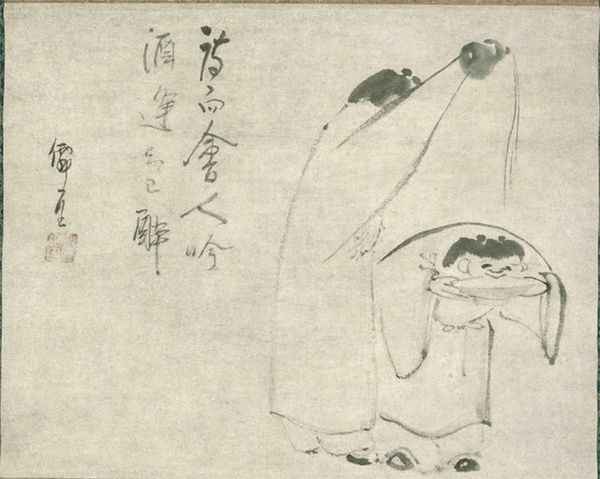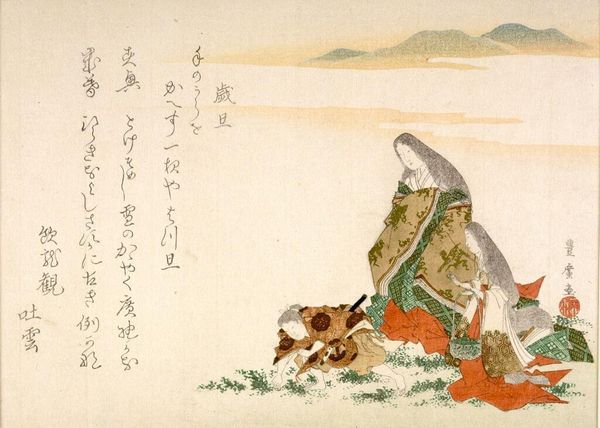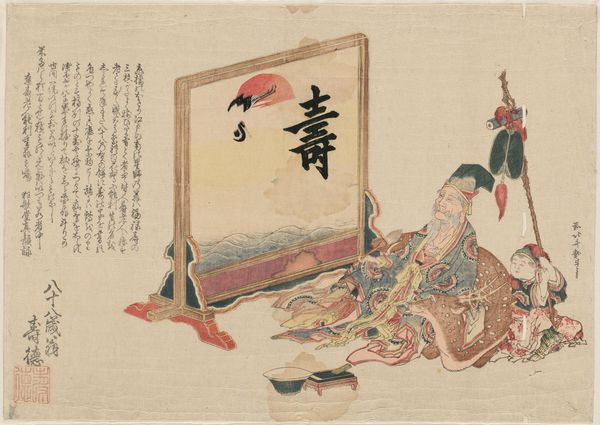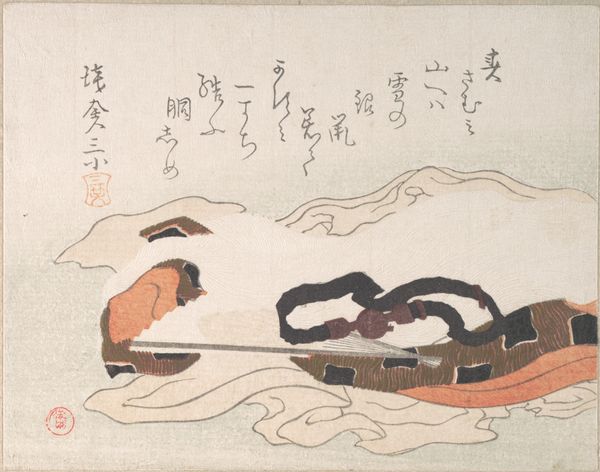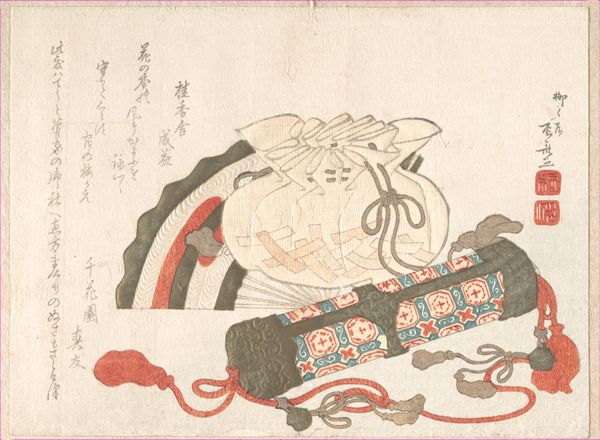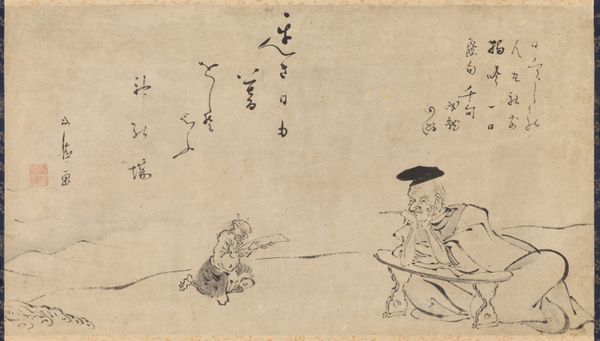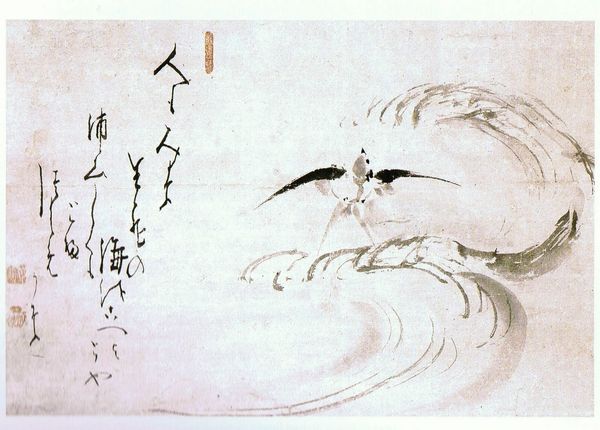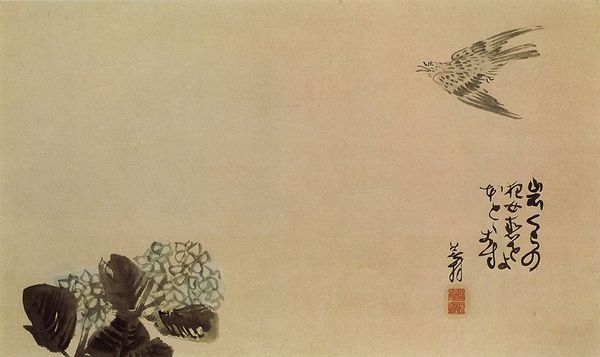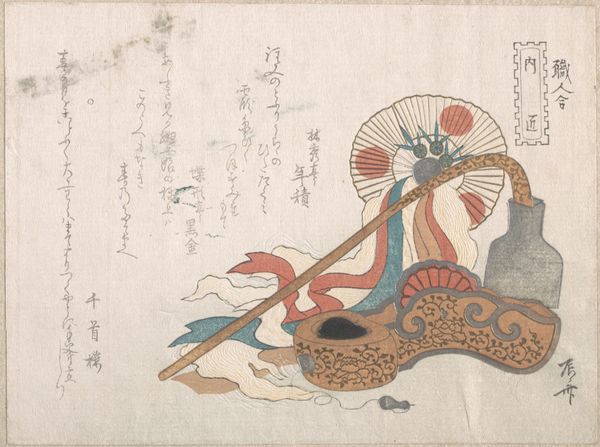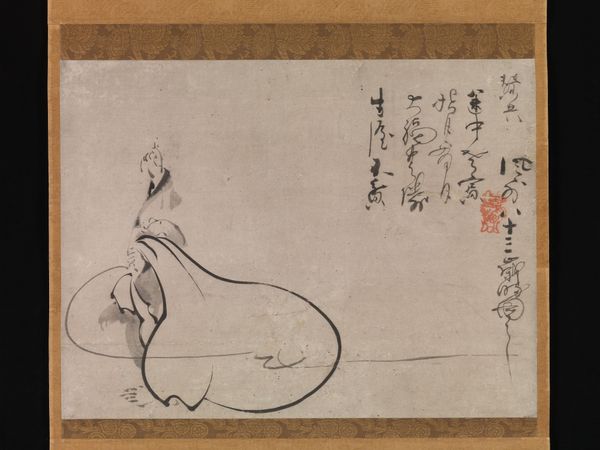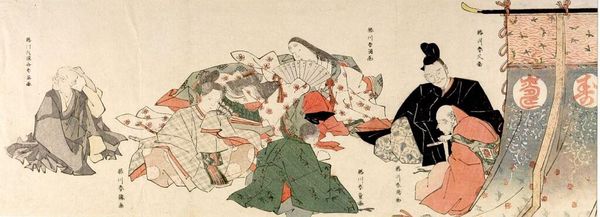
watercolor, ink
#
asian-art
#
landscape
#
figuration
#
watercolor
#
ink
#
coloured pencil
#
line
Copyright: Public domain
Editor: We're looking at "Monkey and Tortoise" by Hakuin Ekaku, an ink and watercolor painting. I'm immediately drawn to the strong contrast between the dark, expressive lines of the monkey and the more subdued tones of the tortoise. How do you read the composition and visual elements? Curator: I appreciate the interplay between the dynamic tension of the monkey and the static nature of the tortoise. Note the skillful economy of line; how few strokes convey so much about form and texture. The application of ink is particularly striking, notice the graded washes which establish depth. How do you interpret the inscription and its relationship to the visual elements? Editor: The inscription adds to the sense of story-telling. Is this interplay between text and image a crucial element in appreciating the art? Curator: Indeed. Observe how the verticality of the inscription mirrors and counterpoints the gesture of the monkey's pointing arm, leading our eye upward and beyond the immediate scene. Consider also the calligraphic line, its variation in pressure and speed mirroring the energy within the represented forms. Editor: That makes a lot of sense! The directional flow creates a structured visual journey. Thank you. I'll look for such interactions between the textual and figural components. Curator: Remember that these elements of composition, line, and inscription work in concert. Understanding their interaction is essential for deciphering meaning in Hakuin's work.
Comments
No comments
Be the first to comment and join the conversation on the ultimate creative platform.
